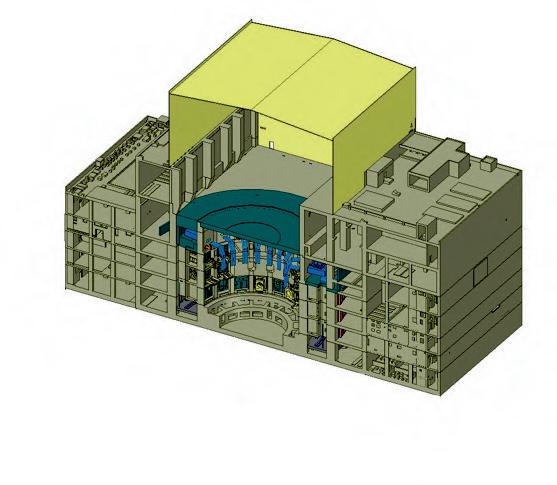
20 minute read
Javier Sanz
NEUTRONS, NEUTRONICS AND THEIR ROLE IN ITER
Javier Sanz (UNED, TECFIR)
Advertisement
ADVANCED NEUTRONICS COMPUTATIONAL METHODS AND TOOLS FOR THE DESIGN OF ITER AND OTHER FUSION ENERGY SYSTEMS
General considerations on fusion neutronics and radiation transport simulations
In fusion energy systems (FES) using tritium-deuterium, high-energy neutrons are created by burning plasma. The fusion-produced neutrons are not confined within the plasma and are emitted out of it. Depending on the characteristics of the plasma, mainly its density, the energy spectrum of the emitted neutrons may differ from that of the neutrons generated in the DT reactions. Once the neutrons escape the plasma, they will behave in many ways as they pass through the components surrounding the plasma chamber. Most will interact with whatever stands in their way, and some will traverse matter unaffected. As result of the neutron transport and interaction with matter different effects are produced, some positive and some negative. On the positive side there are two main effects. Firstly, the neutrons are the energy carriers that, during propagation in matter, transfer energy to an absorbing medium according to different interactions. The energy deposited is the nuclear heat source that is then used to generate electricity. Secondly, as neutrons move inside the system, they can induce reactions giving arise to the production of tritium inside the reactor itself (‘breeding’). Fusion reactors are designed to be self-sufficient in T fuel production. On the negative side, neutrons irradiation can dramatically damage materials. Their interactions cause atomic displacements within the materials and changes in their chemical composition (burnup of some elements and creation of others), a process known as transmutation, responsible namely for the accumulation of gases (H, He) and solid impurities inside the structure. The products of displacements and transmutation lead to changes in dimensions and degradation of physical and mechanical properties of materials. Selecting materials that can
withstand the neutron fusion environment is one of the greatest challenges in the history of materials science. In addition to the neutron damage and the effects of radiation on the materials, neutron irradiation can have severely damaging effects on our health. Shielding for the protection of both equipment and people from neutron damage is not an easy task, as neutrons are capable of penetrating deep into materials. As they move within the materials, they produce gamma rays that also require a proper shielding, since both can cause defects in the materials and grave harm to people. Activation is another significant negative effect. Nuclei are transmuted through several nuclear interactions with the incident neutrons into stable or radioactive nuclei through different reactions. When the nuclei formed are radioactive, we say that the activation of the material has taken place. Safety, maintenance, and waste-related analyses require knowledge of the activity inventories accumulated during operation of an FES, the related decay heat generation and the resultant radiation dose fields over time.
The development and selection of suitable materials from both their resistance to radiation-induced damage phenomena and low neutron-induced radioactivity requirements is a key issue to prove that fusion reactors can be operationally safe, environmentally compatible, and economically viable. The goals of fusion neutronics are to establish firm bases for understanding and modelling the behaviour of neutrons as they travel through matter, as well as the nuclear responses inside matter (power density, changes in composition…), and to support the FES design with complex analyses, suggesting design configurations and materials that can enable the positive effects and minimise the negative ones. Computer codes, databases and simulation models enable these complex analyses to be performed. There are two main subjects in fusion neutronics: radiation transport and time-dependent evolution of isotopic inventory. Advances in radiation transport simulation capabilities and coupling transport-transmutation/activation calculational methods have been significant in recent years and some are described here.
The Monte Carlo (MC) method is the one preferred in fusion neutronics to simulate neutron and gamma transport. It enables integral quantities to be estimated in a detailed mesh of space, energy, angle and time, through statistical sampling of individual neutron histories from their birth in the fusion reaction to death by absorption or leakage, registering any single event through the neutron life. Simulating a sufficient number of neutron histories is what makes it possible to quantify the macroscopic physical quantities of interest. In simulating a single source particle’s history, we compute the score for a quantity of interest and call this a ‘tally’; an example being the neutron energy deposited in a particular region. The average of the scores corresponding to an infinite number of histories would be the true value (true mean) of the physical quantity represented by the tally quantity scored in the simulation, again such as energy deposition. A real MC simulation, which employs a finite number of histories, N, calculates this average (mean value) as an estimate of the physical quantity, and also estimates the error, i.e. it calculates how far the estimated mean is likely to be from the true mean for a sample of length N. This difference is the variance, which is intended to be a small value.
The Monte Carlo method can be applied for solving the neutron transport problem using a continues representation of independent variables (i.e. the phasespace domain). It enables any physical system to be modelled in full 3D geometry without the need for approximations, and that continuous energy nuclear interaction cross-sections can be used. This means that with a high-quality nuclear database, the accuracy of the MC calculation will only be affected by the statistical uncertainty of the calculation itself. However, to obtain sufficiently precise results using the Monte Carlo method, as this is proportional to the number of followed particles, it can be extremely computationally expensive. Methods must be introduced to optimise MC neutron transport simulations in order to get precise results. Major advantages in the application of Monte Carlo transport codes for fusion neutronics over the last decade have been due to the development of: (1) global and very efficient Variance Reduction Techniques; (2) parallel computing, and
(3) use of available CAD geometry data in the Monte Carlo calculations; (4) schemes for coupled 3-D radiation transport and activation calculations. Problems requiring calculations that a decade ago were heroic or impractical, such as those involving large and complex geometry configurations with important deep-penetration and streaming effects, are today efficiently and reliably tractable. Probably one of the more difficult problems is that of the coupling neutron transport and activation simulations to provide radionuclides inventories, decay heat and shutdown doses in those complex systems. Such calculations are done routinely nowadays. In the following sections a short review of the four issues mentioned above is presented.
Acceleration of MC transport calculations
There are two general approaches for the MC simulation of the physical transport process. First, the analogue MC simulation uses as probabilities densities those corresponding exactly to the physical transport process; and second the non-analogue MC approach uses well-founded modified probabilities or sampling distributions in a way that can lead to the same result in the quantity estimates as those using the natural probabilities. The one that converges faster to the correct results will be the preferred one, i.e., the one that obtains a smaller variance for the same computational time. Analogue MC transport simulation has a very limited range of application. Non-analogue MC can reduce the amount of computer time required to obtain sufficiently precise results. The larger the reduction, the more efficient the method of selecting and using modified probability distributions for obtaining estimates of the quantities of interest (i.e. selecting a good Variance Reduction -VR- model). Furthermore, parallel computation is itself a powerful way to speedup MC calculations, as the MC method is inherently parallel (particles are simulated independently). The combination of these two acceleration approaches have dramatically increased the performance of modern MC codes. Traditionally, VR techniques were used to reduce the variance in the estimate of physical quantities confined to a localised energy, angle and spatial (phase-
space) region, and required considerable expertise to use them. Automated VR methods were implemented in the late 1990s, focused on making them easier to use. However, when trying to calculate or ‘tally’ a quantity in multiple localised regions, or even to compute distributions of a quantity, such as flux or dose rate distributions, users had to accept different levels of uncertainty among the estimated quantity in the different locations, or run separate calculations optimised for each individual location. For this type of analyses the deterministic methods were preferred. The Modern VR techniques developed over the last 10 years, called global variance reduction (GVR), enable us to determine a quantity (e.g., flux, dose rate, etc.) with uniformly low statistical uncertainty throughout the entire problem space, and not only confined to a localised region. The most successful GVR methods relays on using information previously obtained, as quickly and effortlessly as possible, on the distribution of the neutron fluxes. Two types of strategies have been implemented to obtain this a priori information: stochastic1 and deterministic (giving rise to the hybrid Monte Carlo/Deterministic methods).2. Currently, ADVANTG is the most advanced tool for implementing deterministic strategies to generate VR parameters to be used by MCNP.3 Furthermore, solutions for an efficient combination of parallel computing and the application of strong GVR techniques have been developed, avoiding a significant reduction in the efficiency of parallel computation.4 Optimisation of GVR techniques is an active field of research.
Modern geometry modelling and management in MC transport simulations
One important issue for reliable neutronics simulations is related to the capability to build a simulation model that replicates the real geometry from the neutronic perspective, and which can be managed efficiently in the transport simulation. The MC method has the potential to be applied on arbitrary 3-D geometric configurations. However, the traditional transport simulation codes have provided a limited geometry modelling capability and hence only an approximation of the realistic geometry configuration could be made available. The main drawback
was that the user had to define the geometry manually, which made impractical to deal large and complex geometries. For application of MC methods to these problems a new way of producing detailed geometry was desperately needed. The efforts to overcome this problem were aimed at making use of available CAD geometry data in the Monte Carlo calculations. Three different approaches have been developed. In what is called the indirect or translational approach, the use of CAD geometry data is achieved by converting the CAD data into the geometry representation used by MC codes.5, 6, 7 In the direct approach, direct tracking of MC particles on the CAD geometry is used.8 More recently, the Unstructured Mesh (UM) geometry description approach is available in MCNP6.9
The current status is that the aforementioned approaches have reached the maturity level to allow their application to real complex design analyses, not possible in a recent past. Advances will optimise to take full advantage of using modern computational geometry generation tools in applying MC methods to physics problems with complicated geometries. Some of the most complex and sophisticated MCNP models ever built, have been created in the framework of ITER to demonstrate the compliance of the ITER design with the safety regulatory limit. They span over hundreds of metres, while capturing a very high degree of material heterogeneity and describe details in the range of millimetre size. Figure1 shows the MCNP model of the ITER Tokamak Complex.10 It reflects the baselines of the updated 2020 version, covering seven buildings, including soil and 1 km of air. Over 4,500 penetrations traced and reviewed one-by-one, and 674 rooms were explicitly modelled. Figure 2 shows the MCNP 360º model of the ITER Tokamak, which has been considered a relevant milestone in ITER nuclear analysis.11 It is probably the most complex MCNP model in the world, and it has enabled the removal of several machine assumptions that were leading to unassessed uncertainties in safety-related quantities. It is of note that new algorithms have been needed to manage the increasingly complex geometry models, such as the two mentioned above.12 Modifications have been made to the loading, storing, and plotting of native MCNP routines.
Crucial effects have been achieved in RAM memory saving (80%) and the reduction of loading times (98%). These new algorithms have also made it possible to achieve efficient ray-firing process for determining the next geometrical cell boundary (20% speed up, ITER C-lite model) and faster visualisation (easy geometry checking for lost particles).
Coupling 3-D radiation transport-activation schemes and shutdown dose rate calculations
The advances in geometry modelling and acceleration of MC transport calculations have major implications in many types of analysis. One of the most complex is the determination of the radiation fields after shutdown (‘post-irradiation fields’ due to the decay of photons emitted by radioactive nuclides) and the related shutdown dose rate (SDR) mapping, which is a significant issue in the nuclear design for any fusion device. Two approaches have been proposed to address this problem. The Rigorous Two-Step (R2S) involves three steps: a neutron transport calculation to determine space– and energy– neutron flux distributions, an activation calculation to compute the decay gamma source, and finally a photon transport calculation for determining the photon flux distribution in space and energy, and the resulting SDR mapping. The ‘two-step’ denomination specifies that neutron and photon transport steps are done separately, coupled by a nuclear inventory analysis code, using suitable interface scripts. For transport, a MC code is used while for activation it is a full nuclide inventory code with a comprehensive modelling of activation, transmutations and depletion. In principle, this is the generally-applied approach, but it can have some limitations in terms of accuracy. Transport by MC enables the geometry to be represented continuously, but as for the activation step a discrete geometry representation (mesh-based description of materials) is required, which places limits on the accuracy. The implementation of this approach has followed different improved methods. Here we will just mention the following for reader reference. Pioneering code
B74
B11
B14


Tokamak Complex
Fig.1. ITER Tokamak Complex. Vertical cross-section of the CAD model (top). Vertical (middle) and horizontal (bottom) cross-sections of the MCNP model. Their adjacent buildings have been also modeled (bottom).10
Hot Cell Complex
Tokamak Complex
Assembly Building
systems were based on the cell-based method,13 and they were followed by those under the ‘super-imposed mesh-based’ method.14 The limitations due to the spatial gradients of the neutron flux and the decay gamma source have been overcome more recently with the ‘cell-under-voxel’ (CuV) method,14 which does not require the use of a conformal mesh. Finally, R2S systems have been developed based on the use of a conformal mesh to tally neutron fluxes and carry out activation.16, 17 Let us say a few words on the CuV technique:15 it is originally from UNED, and the main feature is that it enables the differentiation of materials and fluxes within the voxels of a structured mesh. For voxels containing different materials, CuV generates a different tally for each material corresponding to the real flux, not to the voxel-averaged flux. This technique, originally developed for capturing gradients in the neutron flux to obtain an accurate gamma source definition, can be routinely used when a high-resolution and accurate representation of any nuclear response (such as nuclear heating) throughout a heterogeneous geometry is required. An illustrative situation is when the nuclear response is demanded for use in other physics modelling, such as in thermal analysis, where nuclear heating serves as the source term. It should also be noted that the CuV technique is included within the unified European R2S code system, called cR2S (‘common R2S’), under development by CCFE, KIT and UNED. The other approach, called Direct One-Step (D1S), mainly implemented by ENEA18 and UNED19 performs both the neutron and decay-photon transport simultaneously in the same Monte Carlo simulation. This approach is the most accurate (no discretisation is needed for any variable) in problems where for all the radioisotopes of interest there is linear dependence between the activity of the radioisotope and its production rate. This means that radioisotopes should be produced generated from the initially present stable nuclides by pathways including only one neutron reaction, and that the burn up of the stable parents and radioactive isotopes by nuclear reactions is negligible. These conditions are met in many practical situations. Let us say a few words on the D1SUNED19 code system. It is the refence code in ITER for shutdown dose rate calculations, and it includes pioneering capabilities
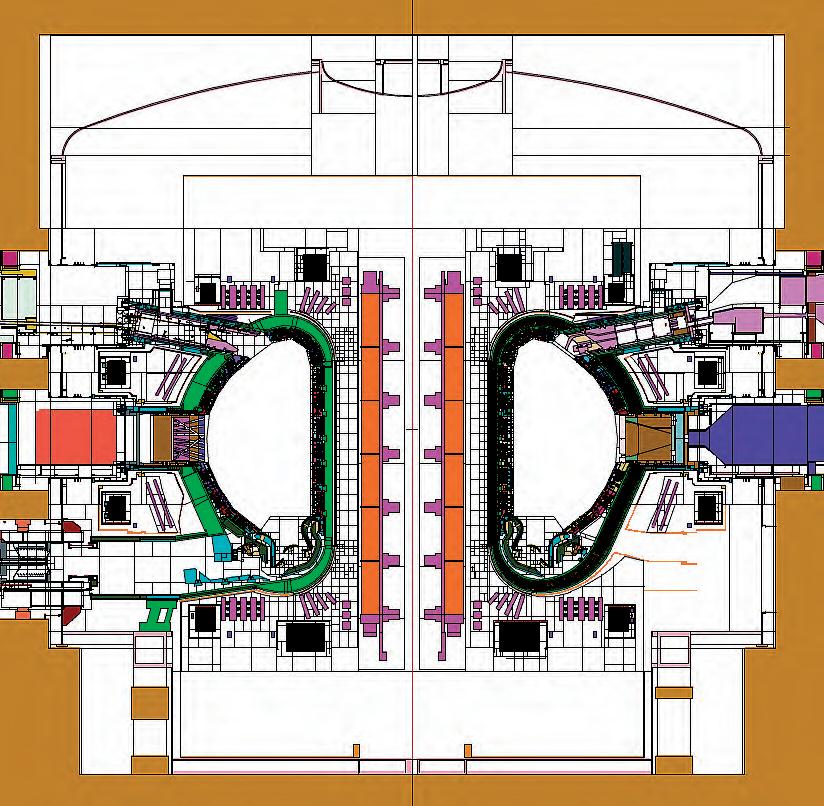
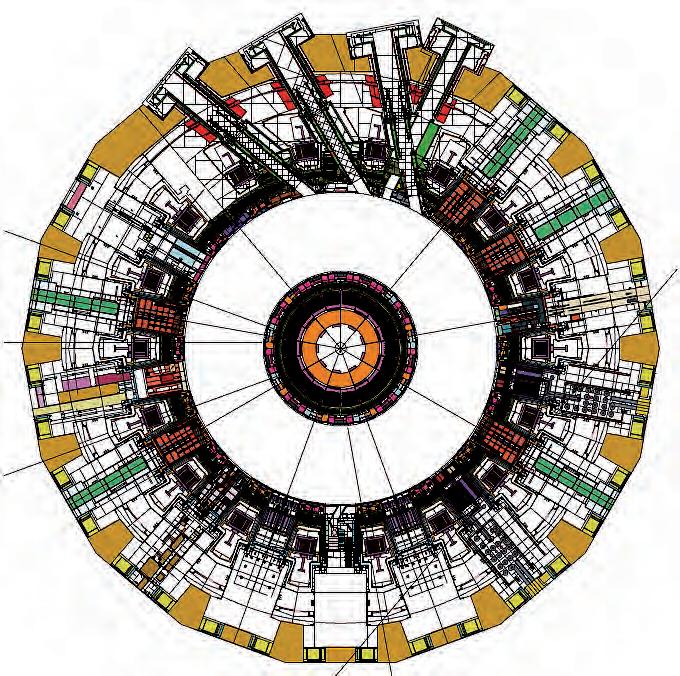
Fig. 2. Vertical (left) and horizontal (right) cross-sections of the E-lite 360° MCNP model of the ITER tokamak.11
for dealing with the large variety of SDR problems on ITER with efficient calculations and suitable analysis of results. Figure 3 shows typical high-resolution shutdown radiation dose rate distributions in ITER obtained with D1SUNED.
Advances in both D1S and R2S methodologies are still ongoing. Efforts are being made to increase the efficiency of MC calculations with better-suited VR techniques to sample more particles in the phase-space regions that contribute to the SDR tally, not just to the determination of the neutron flux distributions.20 As for R2S new capabilities, the problem of how uncertainties in the MC neutron transport calculation affect the SDR uncertainty is another subject of current interest.21, 22
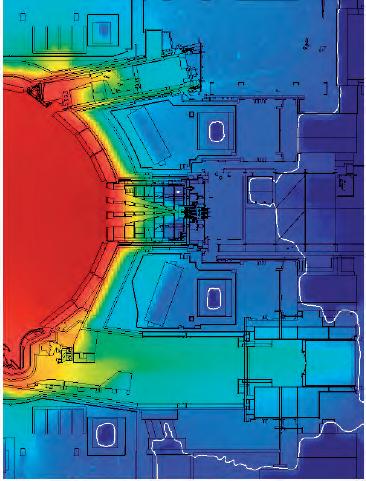
Fig. 3. Radiation map showing the tridimensional distribution of the shutdown dose rate at 106 seconds of cooling time throughout an ITER lower, equatorial, and upper port. (UNED-TECF3IR Sanz, private communication). Workflow for modern fusion neutronics calculations and UNED contributions.
All the fusion neutronics developments mentioned in this chapter are having and will continue to have an impact on the nuclear analysis and design activity of fusion energy systems facilities, providing time-integrated neutronics calculations with an accuracy never previously thought possible for practical application. The calculation workflow for advanced CAD-based Monte Carlo transport and activation simulations for neutronics design of fusion energy systems is shown in Figure 4. The images assigned to the different boxes are taken from ITER applications, in recognition of its driving of the impressive progress being made in computational fusion neutronics. The steps of the computational workflow shown in the figure can be briefly described as follows: 1. A CAD engineering model is converted to a neutronic MC Model. This model, together with the distribution of the neutron sources represent the radiation transport model. Variance reduction techniques such as Global Variance
Reduction (GVR) substantially improve the efficiency and reduce the runtimes required for 3D transport calculations. Appropriated techniques are used to obtention of the GVR parameters of the transport model, and massive-parallel computing is used for MC radiation transport simulations. Coupled neutron-photon transport calculations provide nuclear responses such as tritium production, nuclear heating, H or He production inside structures, displacements per atom in materials and radiation loads, and dose fields. High-resolution results for distributions of neutron flux and nuclear responses can be obtained using advanced techniques, such as the cell-under-voxel approach.
2. Coupling schemes for radiation transport and activation calculations (D1S and R2S) provide the radionuclide inventory, decay gamma source and the resulting decay heat and radiation dose fields during maintenance and shutdown periods. Finally, it can be concluded that advanced methods and computational tools have been developed to produce nuclear response results with high-fidelity and high-resolution on the complex ITER geometry, as required for the neutronics (such as neutron flux for SDR) and other physical aspects (such as nuclear and
decay heat distributions) involved in the engineering design of ITER systems. The two developments likely to have the greatest impact on ITER neutronics are MCAM and D1SUNED. Furthermore, the current neutronics developments fulfil most of the neutronics needs for DEMO and can accurately determine the nuclear responses for use in an integrated multi-physics design approach. The UNED-TECF3IR group can address the complete workflow for ITER and DEMO neutronics analysis. The proprietary codes and software developed7,19,12,15,19,21 are used for most of the tasks. Highly detailed, accurate and reliable simulations and models,10, 11 are also available.
Recent efforts in UNED have been dedicated to increasing the capabilities of the computational tools developed for ITER and DEMO for application to IFMIFDONES [22]. The comprehensive calculational flow chart for IFMIF-DONES is already implemented addressing deuteron, neutron and photon transport simulations, as well as coupled deuteron and neutron-induced activation and radiation transport calculations.
CAD model
Transport model (geometry modelling + radiation sources)
Use of CAD geometry data
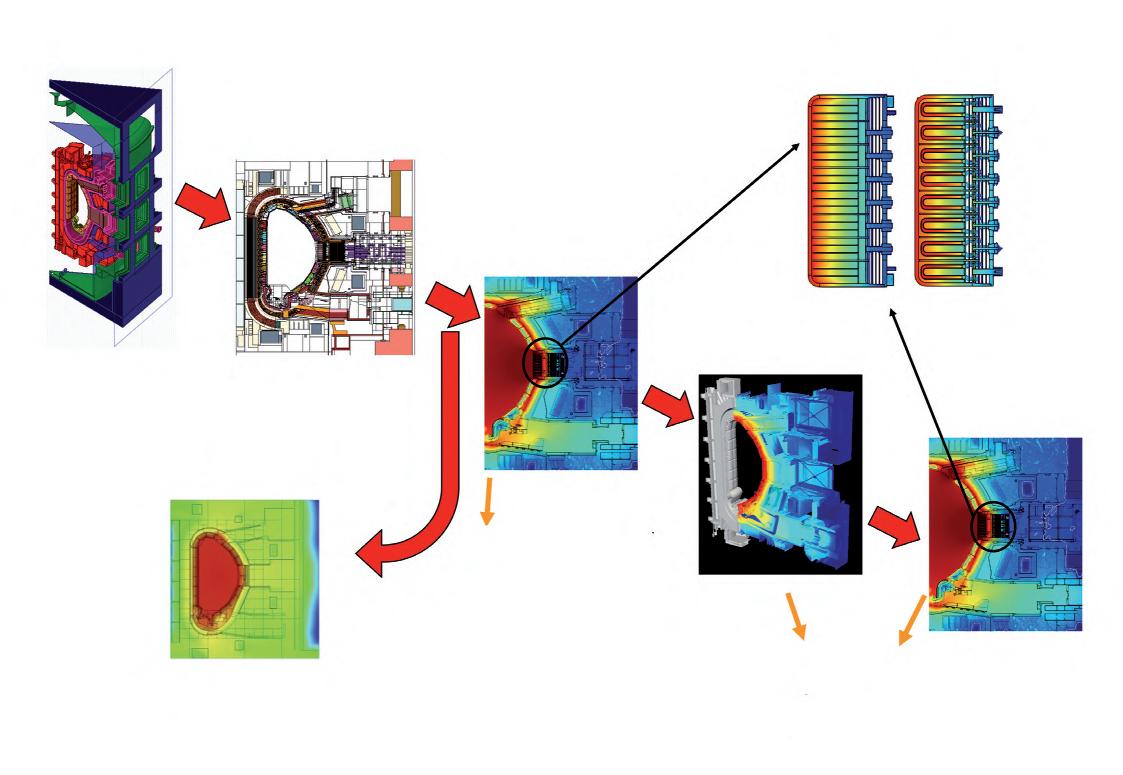
Variance reduction
Weight maps for GVR
Coupled n-γ transport
Monte Carlo
Nuclear responses
n-γ fields Tritium production Nuclear heating Gas production Dpa Prompt dose
3D high fidelity nuclear responses
Nuclear heating
Activation+ Decay γ source (R2S & D1S)
γ transport (R2S & D1S)
Activation responses Nuclide inventory, decay γ field, decay heat and shutdown dose
Fig. 4. Workflow for advanced fusion neutronics calculations (UNED-TECF3IR Sanz, private communication).
REFERENCES
1 A Davis, A Turner, ‘Comparison of global variance reduction techniques for Monte
Carlo radiation transport simulations of ITER,’ Fusion Engineering and Design 86 (9-11) (2011) 2698-2700. 2 J. C. Wagner, D.E. Peplow, and S.W. Mosher, ‘FW-CADIS Method for Global and
Semi-Global Variance Reduction of Monte Carlo Radiation Transport Calculations,’
Nuclear Science and Engineering 176 (2014) 37-57. 3 S. W. Mosher et al., ‘ADVANTG-An Automated Variance Reduction Parameter Generator,’ ORNL/TM-2013/416 Rev. 1, Oak Ridge National Laboratory (2015). 4 A. Turner, A Davis, ‘Improving computational efficiency of Monte-Carlo simulations with variance reduction,’ Proc. International Conference on Mathematics and Computational Methods Applied to Nuclear Science & Engineering. (M&C 2013), American
Nuclear Society. arXiv:1309.6166 [physics.plasm-ph] (2013). 5 Y.Wu, FDS Team, ‘CAD-based interface programs for fusion neutron transport simulation,’ Fusion Eng. Des. 84 (2009) 1987-1992. 6 L. Lu, U. Fischer, P. Pereslavtsev, ‘Improved algorithms and advanced features of the
CAD to MC conversion tool McCad,’ Fusion Eng. Des. 89 (9-10) (2014) 1885-1888. 7 J. García, J.P. Catalán, J. Sanz, ‘Development of the automatic void generation module in GEOUNED conversion tool’ Fusion Engineering and Design, 168 (2021) 112366. 8 P. P .H. Wilson, et al., ‘Acceleration techniques for the direct use of CAD-based geometry in fusion neutronics analysis,’ Fusion Eng. Des. 85 (10-12) (2010) 1759-1765. 9 R. Martz, The MCNP6 Book on Unstructured Mesh Geomerty: User’s Guide (2014),
LA-UR-11-05668 Rev 8. 10 A. J. López-Revelles, J. P. Catalán, A. Kolsek, R. Juarez, R. García, M. García, J. Sanz,
‘MCNP model of the ITER Tokamak Complex,’ Fusion Engineering and Design, 136 (2018) 859-863. 11 R. Juarez. G. Pedroche, M.J. Loughlin, R. Pampin, P. Martinez, M. De Pietri, J.
Alguacil, F. Ogando, P. Sauvan, A. J. López-Revelles, A. Kolsek, E. Polunovskiy, M.
Fabbri, J. Sanz, ‘A full and heterogeneous model of the ITER tokamak for comprehensive nuclear analyses,’ Nature Energy 6 (2021) 150-157.
12 J. Alguacil, P. Sauvan, R. Juárez, J.P. Catalan, ‘Assessment and optimization of MCNP memory management for detailed geometry of nuclear fusion facilities,’ Fusion Eng.
Des. 136 (2018) 386-389. 13 Y. Chen, U. Fischer, ‘Rigorous MCNP based shutdown dose rate calculations: computational scheme, verification calculations and application to ITER,’ Fusion Engineering and Design 63/64 (2002) 107-114. 14 A Davis, R Pampin, ‘Benchmarking the MCR2S system for high-resolution activation dose analysis in ITER,’ Fusion Engineering and Design 85 (1) (2010) 87-92 15 P. Sauvan, J. Catalan, F. Ogando, R. Juarez, J. Sanz, ‘Development of the R2SUNED code system for shutdown dose rate calculations,’ IEEE Transactions on Nuclear
Science 63 (2016) 375-384. 16 T. Eade, D. Stonell, A. Turner, ‘MCR2S unstructured mesh capabilities for use in shutdown dose rate analysis,’ Fusion Engineering and Design 100 (2015) 321-333. 17 Elliott D. Biondo, Andrew Davis, Paul P.H Wilson, ‘Shutdown dose rate analysis with
CAD geometry, Cartesian/tetrahedral mesh, and advanced variance reduction,’ Fusion
Engineering and Design 106 (2016) 77-84. 18 Giovanni Mariano, Davide Flammini, Nicola Fonnesu, Fabio Moro, Rosaria Villari,
‘Progress in development of advanced D1S dynamic code for three-dimensional shutdown dose rate calculations,’ Fusion Engineering and Design 157 (2020) 111631. 19 P. Sauvan, R. Juárez, G.Pedroche, J. Alguacil, J. P.Catalan, F. Ogando, J. Sanz,
‘D1SUNED system for the determination of decay photon related quantities,’ Fusion
Engineering and Design 151 (2020) 111399. 20 Ahmad M. Ibrahim, Douglas E. Peplow, Robert E. Grove, Joshua L. Peterson, and Seth
R. Johnson, ‘The Multi-Step CADIS Method for Shutdown Dose Rate Calculations and Uncertainty Propagation,’ Nuclear Technology, 192 (2015) 286-298. 21 J. Alguacil, P. Sauvan, J. P. Catalan, and J. Sanz ‘Development of a methodology to estimate the statistical SDR uncertainty with R2S-UNED,’ Fusion Engineering and
Design 168 (2021) 112696. 22 V. López, P. Sauvan, F. Ogando, ‘Shutdown dose rates calculations due to light ions induced activation using D1S methodology,’ Fusion Engineering and Design, 167 (2021) 112298.










